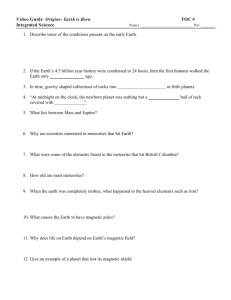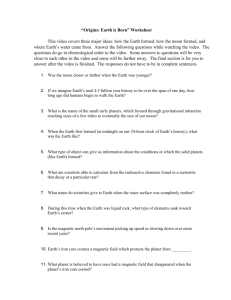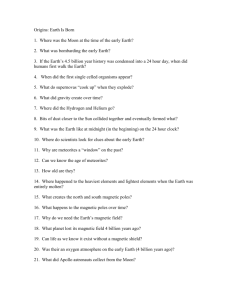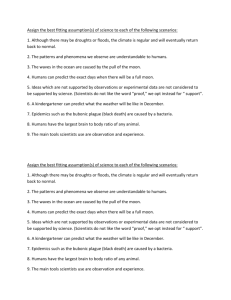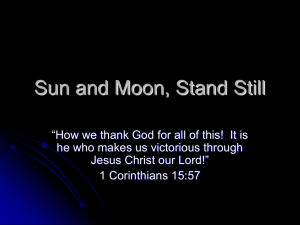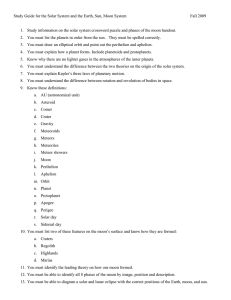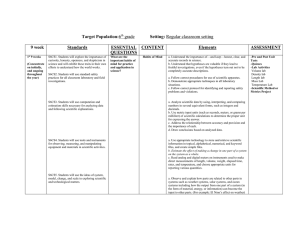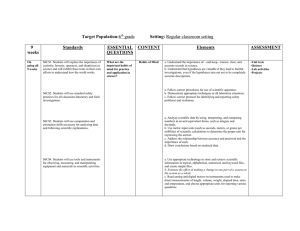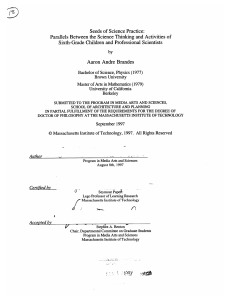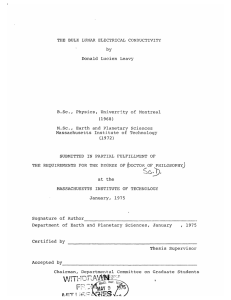Origin of Earth and Solar System
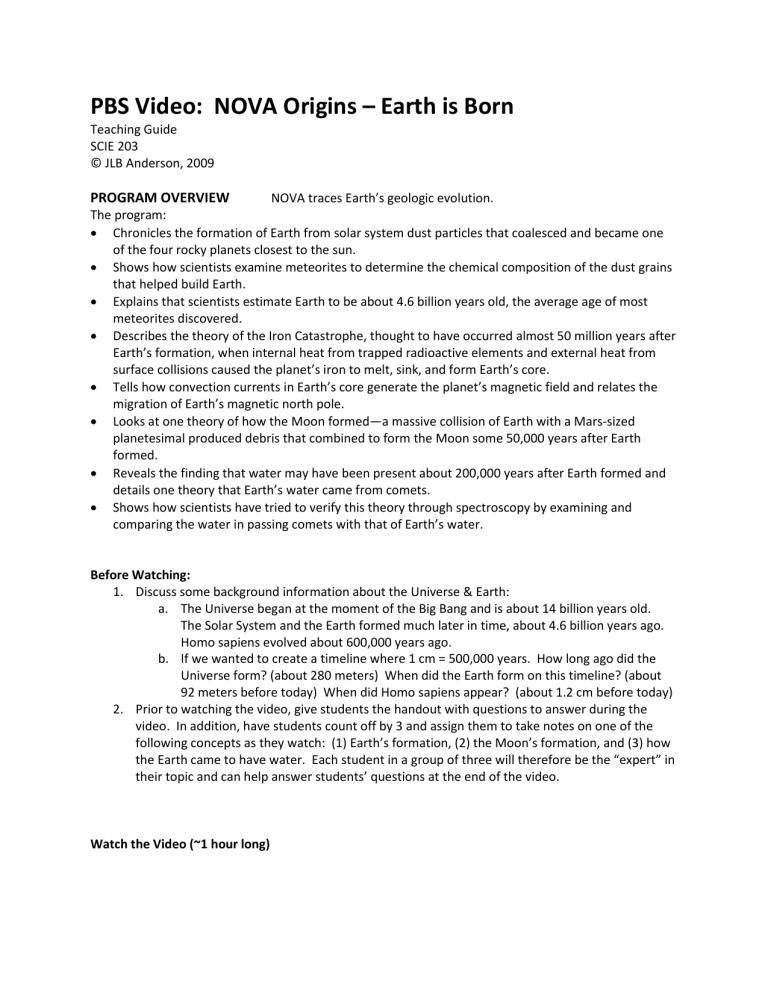
PBS Video: NOVA Origins – Earth is Born
Teaching Guide
SCIE 203
© JLB Anderson, 2009
PROGRAM OVERVIEW
NOVA traces Earth’s geologic evolution.
The program:
Chronicles the formation of Earth from solar system dust particles that coalesced and became one of the four rocky planets closest to the sun.
Shows how scientists examine meteorites to determine the chemical composition of the dust grains that helped build Earth.
Explains that scientists estimate Earth to be about 4.6 billion years old, the average age of most meteorites discovered.
Describes the theory of the Iron Catastrophe, thought to have occurred almost 50 million years after
Earth’s formation, when internal heat from trapped radioactive elements and external heat from surface collisions caused the planet’s iron to melt, sink, and form Earth’s core.
Tells how convection currents in Earth’s core generate the planet’s magnetic field and relates the migration of Earth’s magnetic north pole.
Looks at one theory of how the Moon formed—a massive collision of Earth with a Mars-sized planetesimal produced debris that combined to form the Moon some 50,000 years after Earth formed.
Reveals the finding that water may have been present about 200,000 years after Earth formed and details one theory that Earth’s water came from comets.
Shows how scientists have tried to verify this theory through spectroscopy by examining and comparing the water in passing comets with that of Earth’s water.
Before Watching:
1.
Discuss some background information about the Universe & Earth: a.
The Universe began at the moment of the Big Bang and is about 14 billion years old.
The Solar System and the Earth formed much later in time, about 4.6 billion years ago.
Homo sapiens evolved about 600,000 years ago. b.
If we wanted to create a timeline where 1 cm = 500,000 years. How long ago did the
Universe form? (about 280 meters) When did the Earth form on this timeline? (about
92 meters before today) When did Homo sapiens appear? (about 1.2 cm before today)
2.
Prior to watching the video, give students the handout with questions to answer during the video. In addition, have students count off by 3 and assign them to take notes on one of the following concepts as they watch: (1) Earth’s formation, (2) the Moon’s formation, and (3) how the Earth came to have water. Each student in a group of three will therefore be the “expert” in their topic and can help answer students’ questions at the end of the video.
Watch the Video (~1 hour long)
After Watching:
3.
Have students write a short reflection: a.
What did you learn? b.
What surprised you? c.
What other questions do you have?
4.
Share out with their group of three (or four) and see if any of the experts can address their questions or give them more information to improve their understanding.
5.
Have the group come up with three questions they are still confused about or topics that they want to learn more about.
6.
Hand in the individual reflections and the group questions. These can help guide the instructor’s preparation for the follow-up discussion on the following day.
Study questions for the film Origins: Earth is Born
Name:__________________________
Where did the chemical elements that make up the Earth come from?
When was Earth formed?
What space objects help scientists study the early Earth?
How do scientists estimate the age of the solar system?
What was the surface of Earth like during its early years?
Why is Earth’s magnetic field important?
What was surprising about the chemistry of Moon rocks?
How was the Moon formed?
In what two ways did water get to Earth’s surface?
